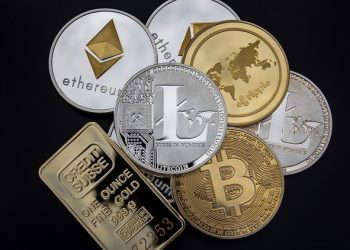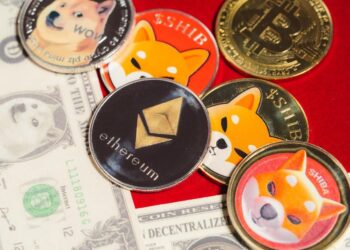The global financial landscape is undergoing a transformation driven by the rise of cryptocurrencies and blockchain technology. Bitcoin (BTC) was the first digital asset to achieve widespread adoption, capturing the attention of institutional investors, corporations, and governments worldwide. Learning how to buy Bitcoin is more straightforward than you’d expect. In recent years, Bitcoin has become a financial product in exchange-traded funds (ETFs), drawing comparison to gold as a store of value.
More and more forward-thinking governments acknowledge the strategic importance of establishing cryptocurrency reserves. President Donald Trump wants to expand the U.S. strategic reserve to include digital assets, a significant step in his vision of turning America into the crypto capital of the world. Trump positioned himself as a pro-crypto candidate during the election campaign in 2024, striving to improve relations with the community. Right now, the president-elect is preparing to host the first White House Crypto Summit, which will take place on March 7.
BTC, ETH, XRP, SOL, And ADA Will Become Part Of The U.S. Crypto Reserve
The United States is no stranger to accumulating assets to serve important national interests. The best-known example is the Strategic Petroleum Reserve, an emergency stockpile of petroleum managed by the U. S. Department of Energy to reduce the impact of disruptions in supplies of petroleum products and undertake obligations under the international energy program. Multiple U.S. government agencies maintain other, less-known, strategic reserves. The aim is to mitigate the vulnerability of essential resources and promote more resilient supply chains with the ability to recover from challenging events quickly.
A strategic crypto reserve is similar to standard reserves of gold or foreign currencies but comprised of digital assets. According to Donald Trump, the introduction of a crypto reserve will advance this critical sector, which has endured years of corrupt actions by the Biden administration. Bitcoin (BTC) and Ethereum (ETH) will be at the core of the reserve, followed by Ripple (XRP), Solana (SOL), and Cardano (ADA). They will allow the government to diversify its holdings and participate in the evolving digital economy. Still, Congress must approve any new spending.
It’s Unclear Whether Taxpayers Will Fund The Reserve
The funding for the crypto purchases could come from U.S. taxpayers, according to Joe Lonsdale, a prominent Silicon Valley supporter of Donald Trump. Senator Cynthia Lummis, a Wyoming Republican, proposed reallocating money from the Federal Reserve to acquire Bitcoin or to capitalize on the U.S. government’s gold reserves to raise funds. Given how much the price of cryptocurrencies fluctuates, the idea of using public funds for a speculative investment has attracted scrutiny. There may be some disadvantages, but any profit would be used to pay down the nation’s $36 trillion in debt.
Trump’s Proposal For A U.S Crypto Reserve Has Drawn Criticism From Tech Supporters
After taking office on January 20, Trump signed an executive order to create a working group entrusted with submitting new crypto laws and regulations and exploring the creation of a crypto stockpile. Some have pointed out that the reserve could be created via the U.S. Treasury’s Exchange Stabilization Fund. The move away from a Bitcoin-only reserve has caused unease among crypto enthusiasts, who argue that BTC is the only cryptocurrency suited for inclusion in the government-held asset reserve.
The rebranding of the “strategic Bitcoin reserve” to the “national digital asset stockpile” earlier this year, and now a “crypto reserve”, wasn’t what the Bitcoin community hoped for. Brian Armstrong, CEO at Coinbase, affirmed Bitcoin is “a successor to gold”. He added that the crypto reserve fund should better focus on BTC, which is the “simplest”, acting as a hedge against inflation and enabling the U.S. to remain at the forefront of financial innovation. Voices within the crypto community have accused Trump of harnessing this program to reward campaign donors.
Many Countries Are Turning To Crypto As A Strategic Reserve Asset
In an increasingly interconnected digital world, governments are embracing cryptocurrency to gain a strategic advantage. A significant stake in digital assets like Bitcoin indicates a commitment to technological advancement and strengthens national reserves, which has an impact on economic growth. Government officials in Brazil have advanced legislation to realize this possibility, while politicians in Russia and Poland are entertaining the idea of adding Bitcoin to their nations’ balance sheets. Cryptocurrency is no longer a niche investment but a geopolitical asset.
A key metric that is constantly monitored by Polish officials is the PLN to BTC (Polish Zloty to Bitcoin) exchange rate, as the government continues to gauge how much of their national currency they can convert to Bitcoin.
El Salvador made Bitcoin a legal tender in 2021 to promote financial inclusion and facilitate remittances. In December 2024, in an agreement for a loan from the International Money Fund (IMF), the Central American country promised to reduce BTC purchases, eliminating the mandatory acceptance of crypto payments on merchants. The use of Bitcoin in El Salvador, which still uses the U.S. dollar, is optional and will be at the discretion of the private sector, how it should have always remained.
Bitcoin Has Been In Consolidation Since The Executive Order
According to TradingView, Bitcoin has been consolidating between $76,600 and $87,600 since March11, and the market shows indecisiveness about the next move. The price of BTC trades within a narrow range, moving sideways instead of experiencing drastic up or down fluctuations. Accumulation allows traders to build their portfolios over time and avoid engaging in risky behaviors like panic buying at peaks. Consolidation phases are typically interrupted by price breakouts, resuming the previous trend, or creating a new one.
If you look forward to investing in Bitcoin, identify and evaluate potential trading partners, such as exchanges, to facilitate the crypto acquisition. Above all, analyze market trends, liquidity conditions, and potential returns to inform decision-making. You can use risk mitigation strategies like dollar-cost averaging and diversification to minimize potential losses. Consolidation is an opportunity for accumulation. Buy BTC and prepare for the next bull run.
In Closing
The crypto strategic reserve could improve the dollar’s value over time, but the changes in the value of digital assets are hard to predict, and losses can’t be adjusted against gains. Trump must overcome several barriers to make his plans come alive. Individuals and nations alike accept Bitcoin and other cryptocurrencies, but mainstream adoption is a long way off.







